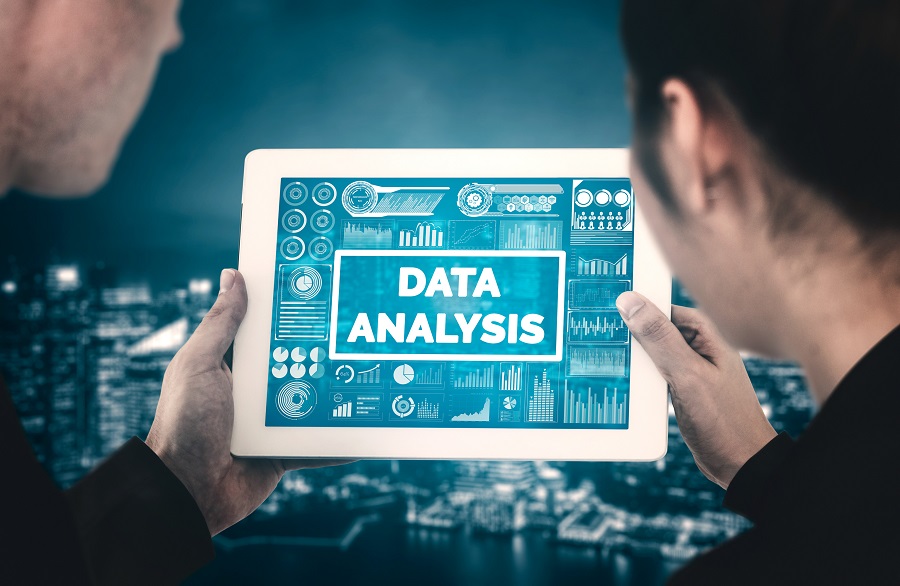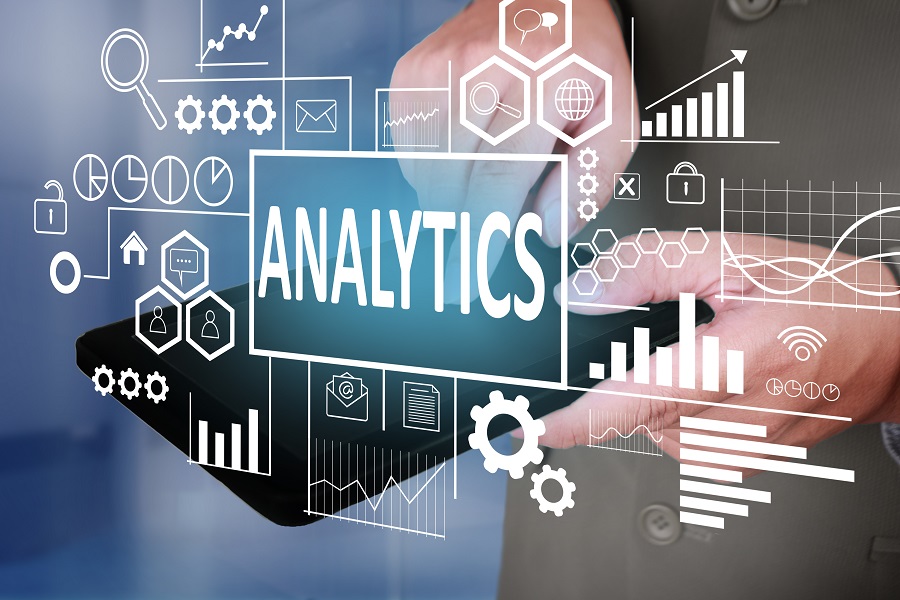Most business decisions used to start with a hunch, a guess, or a gut feeling dressed up in confidence, but times have changed, and now the companies that win are the ones that ask better questions, track better numbers, and trust fewer assumptions. Every move, from marketing to hiring to logistics, leaves a trail of data behind, and those who know how to read it are no longer guessing – they’re choosing with insight. Data analytics for business has shifted how decisions are made, moving from intuition to information without losing the human touch. It doesn’t take endless dashboards or jargon-heavy reports to understand what’s working, what’s off-track, and where the next opportunity is hiding. With the right mix of tools, thinking, and context, teams at every level can make sharper calls.
In this blog, we’ll break down what makes data analytics so useful, how predictive data analytics works in practice, and where Data Analytics Solutions make the biggest difference.
What Is Data Analytics and Why Does It Matter?
Data analytics is the process of collecting raw information, breaking it down into patterns, and turning it into something you can actually use to make decisions that are smarter, faster, and far less risky. It’s not about flooding your screen with charts or drowning in spreadsheets; it’s about seeing what matters and knowing what to do next.
In simple terms, data analytics for business means turning information into insight. It starts with collecting data from different places – sales reports, website clicks, customer feedback, supply chains – and then making sense of it all. That might mean spotting a sales dip before it becomes a crisis or noticing that a certain ad always pulls better in one region than another.
The point isn’t just to know what happened, it’s to understand why it happened and what should happen next. That’s where the real edge comes in. Used well, analytics can stop problems before they grow, double down on what works, and cut out what’s wasting time or money. It makes your decisions feel less like educated guesses and more like confident moves. In a world where speed and precision matter more than ever, that kind of clarity isn’t optional – it’s survival.
How Is Data Analytics Different from Traditional Decision-Making?
Old-school decision-making relied on instincts, past experiences, and whatever info happened to be available at the time, which often meant reacting after the damage was done or chasing gut feelings that didn’t always hold up under pressure. In contrast, data analytics for business replaces assumptions with evidence, helping people make smarter moves before problems show up.
Think of it like this – traditional decision-making is like driving with a foggy windshield, hoping your memory of the road will keep you safe, while data analytics is like switching on high beams, getting a clear view of what’s ahead so you can adjust in real time. It’s not just about being more informed, it’s about being more deliberate.
Here’s how the two approaches compare:
| Traditional Decision-Making | Data Analytics for Business |
| Relies on past experiences | Uses real-time and historical data |
| Driven by instinct or hierarchy | Driven by patterns and insights |
| Often reactive to problems | Predictive and proactive |
| Hard to measure or replicate | Easy to track and scale |
| Decisions vary by individual bias | Decisions align with consistent data |
By shifting to Data Analytics Solutions, teams gain the ability to back their choices with facts instead of feelings. That doesn’t mean removing human judgment – it means giving it a stronger foundation.
What Are the Core Types of Data Analytics?
To make sense of data and actually use it, you need more than just reports – you need the right kind of analysis for the right kind of decision. That’s where the four main types of analytics come in, each one answering a different kind of question and guiding a different kind of action.
- Descriptive Analytics: This is the starting point. It looks at what has already happened. Think: monthly sales totals, site visits, or product returns. It’s not telling you why it happened – it’s just laying out the facts clearly.
- Diagnostic Analytics: Here’s where we start asking “why.” If sales dropped last quarter, diagnostic tools can show if it was a pricing issue, a supply delay, or maybe a regional slump. It looks backward to explain the past.
- Predictive Data Analytics: This one looks forward. It uses historical patterns to forecast what might happen next. It can tell you which customers are likely to leave, what inventory you’ll need, or what promotions will work best next month.
- Prescriptive Analytics: This goes a step further. Not just predicting what’s coming, but suggesting what to do about it. If you’re short on inventory, it might recommend the best vendor to restock from.
Each type supports a different layer of decision-making. Together, they shift business thinking from hindsight to foresight. And the more advanced your use of predictive data analytics, the more confident you can be about what’s coming next.
Where Is Predictive Data Analytics Being Used in Real Life?
You don’t need to be a tech giant to use predictive data analytics – you just need to be serious about staying ahead. It’s already helping businesses in every industry spot problems early, plan smarter, and waste less time on guesswork.
- Retail: Stores track what customers buy, when they buy it, and what they ignore. This data feeds models that predict which products to stock up on next season and when to launch discounts without hurting margins.
- Finance: Banks use patterns in spending and transactions to flag fraud before it spreads, approve loans more safely, and help clients avoid risky behaviors with timely alerts.
- Healthcare: Hospitals track symptoms, history, and medication responses to predict which patients might develop complications, helping doctors step in earlier and improve outcomes.
- Supply Chain: Companies monitor weather, transport data, and global events to predict delivery delays and reroute shipments before things go off track.
- HR and Staffing: Teams use predictive data analytics to forecast turnover risk, pinpoint hiring gaps, and build schedules that better match workloads.
In every case, the goal stays the same: see ahead, act sooner, and stop wasting effort on things that won’t work. With the right Data Analytics Solutions, even small signals in the data can turn into big wins.
What Makes Predictive Data Analytics Stand Out?
While all types of analytics serve a purpose, predictive data analytics stands out because it doesn’t just tell you what happened or why it gives you a glimpse of what’s likely to happen next, which is where better decisions really begin. Instead of reacting to a dip in sales or a missed shipment, you can act before it becomes a problem.
The reason it works is because it builds on patterns. It looks at years of data, finds what tends to happen in similar situations, and projects what could happen again. Add machine learning to the mix, and it gets even sharper, constantly adjusting as new data comes in.
This makes it valuable across the board – whether you’re deciding how much stock to order, which leads to prioritize, or when to follow up with a customer. It’s not magic, but it feels close when it gets things right more often than not.
What sets predictive data analytics apart is how it turns data from a rear-view mirror into a forward-facing radar. It doesn’t just analyze, it anticipates. That’s why businesses that use it tend to move quicker, spend smarter, and handle surprises better than those still relying on hindsight alone.
Why Is Real-Time Data Important for Business Decisions?

Waiting days or weeks to get reports means you’re always reacting to the past. That might’ve worked when markets moved slower, but now things shift by the hour, and what happened last week might already be outdated. That’s why real-time data isn’t just helpful – it’s a serious edge.
With Data Analytics Solutions that process information instantly, teams can catch problems as they unfold and respond before the damage spreads. If your inventory’s running low, you can adjust orders before shelves go empty. If a campaign’s flopping, you can shift the budget while there’s still time to make it count.
Real-time updates help more than just managers. Sales reps can walk into meetings with the freshest numbers. Customer service teams can spot frustrated clients before they churn. And leadership can see the truth of what’s happening – not just what someone says happened.
When decisions rely on live data, they’re grounded in what’s actually going on, not just what people assume. It’s the difference between acting confidently and scrambling to fix mistakes that already happened. And in business, speed isn’t about being fast for the sake of it; it’s about being first to act when it matters most.
How Can Businesses Use Data Analytics Without Drowning in It?
You don’t need to track everything, and you don’t need to understand every chart. You just need to know what decisions you’re trying to improve, then work backward from there. That’s how smart teams use data analytics for business – with purpose, not panic.
Start small. Pick a few areas where better data could save time or money. Maybe it’s customer churn, ad performance, or delivery delays. Then, use Data Analytics Solutions that match those goals, not ones that overload you with a thousand metrics you don’t care about.
Make sure your team knows how to read what they’re seeing. You don’t need everyone to be a data scientist. But they should know what red flags to look for, what the numbers mean, and how to connect them to actions. Training matters more than tools.
And remember: dashboards are tools, not answers. The goal is always insight that leads to a clear next step. Otherwise, you’re just collecting data for the sake of it. Keep the focus on clarity, not complexity, and you’ll get the value without the burnout.
Conclusion
Smart decisions don’t come from guessing or overthinking – they come from clarity, and that’s exactly what predictive data analytics brings to the table. Whether you’re managing customers, inventory, or people, the difference between a good choice and a great one often lies in what you can see before others can.
With the right tools and mindset, data analytics for business doesn’t just help you make sense of the past—it makes the future feel a little less uncertain. And while the tools matter, what really counts is using them to ask better questions, get faster answers, and act with confidence. That’s not hype. That’s the point. Good data doesn’t replace judgment. It sharpens it.
FAQs
What is the simplest way to start using data analytics for business?
Start with a clear goal, like reducing churn or improving sales. Choose one metric that impacts that goal and track it weekly. Don’t aim for perfect—just start tracking and adjusting.
Why is predictive data analytics better than just looking at past numbers?
Looking backward helps you understand what happened, but predictive tools help you see what’s coming next, so you can act ahead of time instead of playing catch-up.
Can small businesses afford Data Analytics Solutions?
Yes, many tools are now built for small teams with simple interfaces and affordable pricing. You don’t need a big budget to get big value from the right data.
Is data always right when making decisions?
No, data isn’t flawless—it needs context. The best decisions come from using data to inform your thinking, not replace it entirely.
Do I need a tech team to use predictive data analytics effectively?
Not necessarily. Many modern tools are user-friendly and designed for non-technical teams, as long as there’s clarity on what you’re trying to improve.

